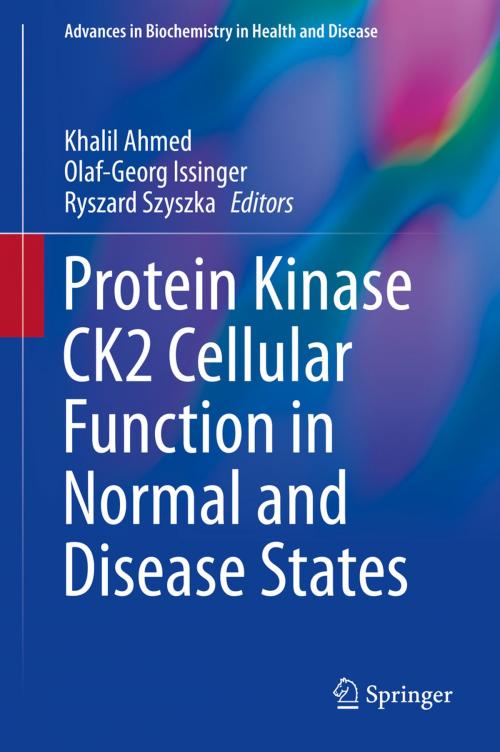Protein Kinase CK2 Cellular Function in Normal and Disease States
Nonfiction, Science & Nature, Science, Biological Sciences, Biochemistry, Health & Well Being, Medical, Specialties, Oncology| Author: | ISBN: | 9783319145440 | |
| Publisher: | Springer International Publishing | Publication: | March 3, 2015 |
| Imprint: | Springer | Language: | English |
| Author: | |
| ISBN: | 9783319145440 |
| Publisher: | Springer International Publishing |
| Publication: | March 3, 2015 |
| Imprint: | Springer |
| Language: | English |
Protein kinase CK2 (formerly casein kinase II or 2) is known to play a critical role in the control of cell growth and cell death and is thus intimately involved in the development of cancer. More specifically, CK2 has been found to be elevated in all cancers examined. While CK2 levels are known to be high in proliferating normal cells, CK2 has also been found to be a potent suppressor of apoptosis and is a link to the cancer cell phenotype, which is characterized by deregulation of both cell proliferation and cell death. Indeed, it would appear that CK2 impacts many of the hallmarks of cancer and it has now gained considerable attention as a potential target for cancer therapy. Protein Kinase CK2 and Cellular Function in Normal and Disease States increases knowledge of the role of CK2 in the development of cellular dysfunction and emphasizes that this protein may serve as a target of drug development for improved cancer therapy. In addition, it is a handy tool that provides cancer researchers, graduate students, and all scientists involved in CK2 research with one main source for the latest advances in CK2 research.
Protein kinase CK2 (formerly casein kinase II or 2) is known to play a critical role in the control of cell growth and cell death and is thus intimately involved in the development of cancer. More specifically, CK2 has been found to be elevated in all cancers examined. While CK2 levels are known to be high in proliferating normal cells, CK2 has also been found to be a potent suppressor of apoptosis and is a link to the cancer cell phenotype, which is characterized by deregulation of both cell proliferation and cell death. Indeed, it would appear that CK2 impacts many of the hallmarks of cancer and it has now gained considerable attention as a potential target for cancer therapy. Protein Kinase CK2 and Cellular Function in Normal and Disease States increases knowledge of the role of CK2 in the development of cellular dysfunction and emphasizes that this protein may serve as a target of drug development for improved cancer therapy. In addition, it is a handy tool that provides cancer researchers, graduate students, and all scientists involved in CK2 research with one main source for the latest advances in CK2 research.















